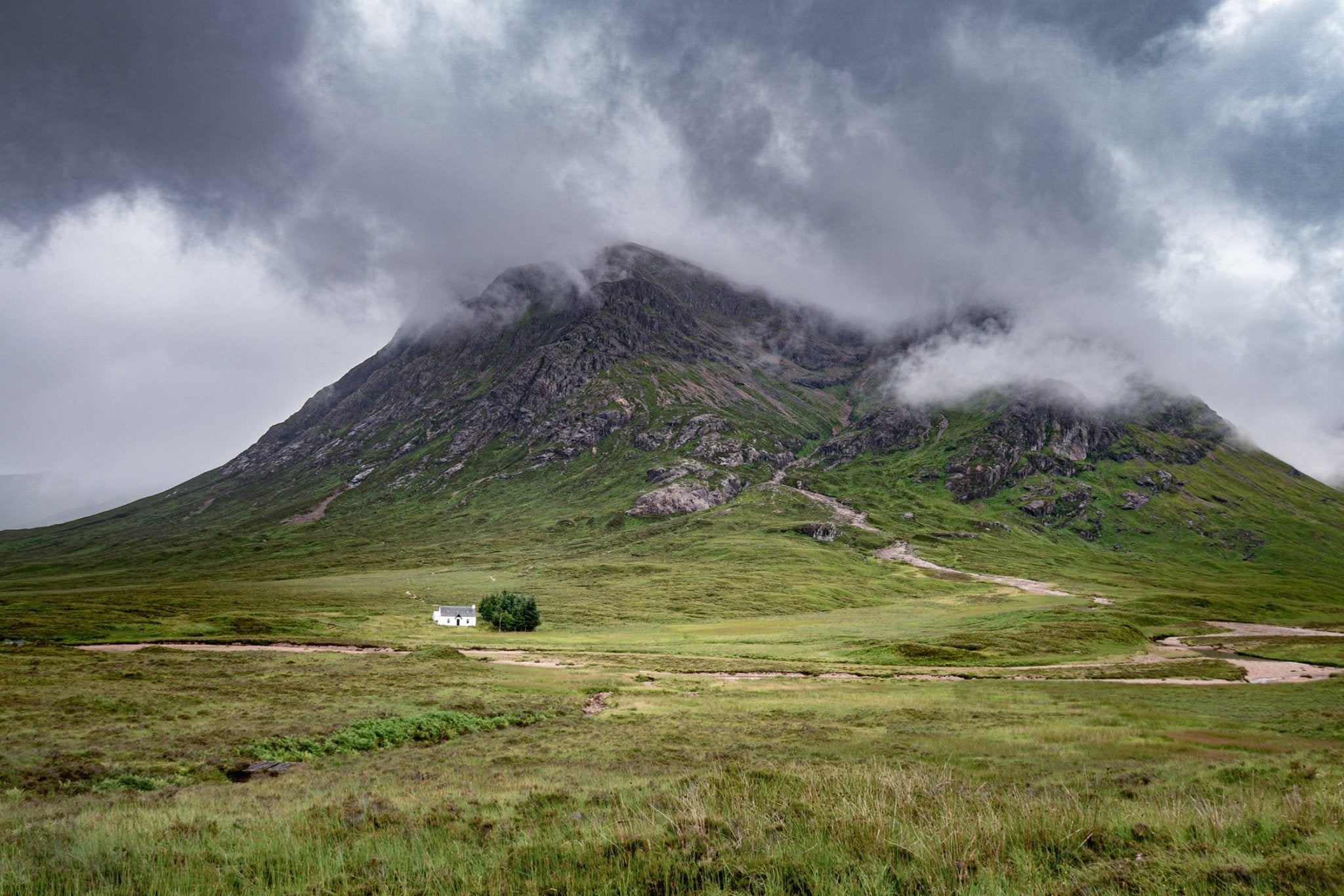Scotland is home to stunning landscapes and diverse wildlife, making its national parks a treasure for nature lovers. The country currently has two national parks: Loch Lomond and The Trossachs, and the Cairngorms. Each park features breathtaking scenery, from serene lochs to majestic mountains, encouraging outdoor activities like hiking, cycling, and stargazing.
In addition to these parks, Scotland boasts 43 National Nature Reserves and several UNESCO sites, enhancing its natural heritage. These areas are renowned for their rich ecosystems and cultural significance. Those who visit can witness the incredible wildlife and varied habitats that make these parks special, providing memorable experiences and beautiful views.
Exploring Scotland's national parks invites adventure and discovery. The combination of protected natural beauty and opportunities for recreation makes these parks vital to Scotland's identity and heritage. Visitors are sure to be inspired by the landscapes and the chance to connect with nature.
Overview of National Parks in Scotland
National parks in Scotland are protected areas that showcase the country's stunning landscapes and rich wildlife. These parks are managed to balance natural conservation and public enjoyment. There are currently two national parks: Loch Lomond and The Trossachs National Park, and Cairngorms National Park.
Legislation and Governance
The National Parks (Scotland) Act 2000 is the key legislation governing the establishment and management of national parks in Scotland. This Act outlines the criteria for designating areas as national parks, focusing on their outstanding natural or cultural heritage.
National park authorities, established under this Act, play a vital role in governance. They are responsible for the conservation and promotion of parks, ensuring sustainable tourism and access while engaging local communities. NatureScot, the leading public body for Scotland's natural heritage, supports these authorities. They provide guidance, funding, and expertise to help maintain the integrity of these parks.
National Park Aims and Objectives
The national parks aim to achieve several key objectives, primarily focused on conservation and public benefit. Each park seeks to preserve its unique landscape, habitats, and wildlife while promoting accessibility for visitors.
Their objectives include:
- Supporting local economies through responsible tourism.
- Addressing climate change by promoting sustainable practices.
- Enhancing public awareness of natural and cultural heritage.
By fostering a balance between conservation and recreation, national parks in Scotland strive to create a space where nature and people can thrive together. The Scottish Parliament and Government support these efforts, emphasising the importance of environmental stewardship.
Distinctive Landscapes and Natural Heritage
Scotland is home to stunning landscapes and rich natural heritage. Its national parks showcase diverse ecosystems, from rugged mountains to serene lochs. These areas are vital for wildlife and provide recreational opportunities, highlighting Scotland’s commitment to preserving nature.
Cairngorms National Park
Cairngorms National Park is the largest national park in the UK. It features towering mountains, deep valleys, and ancient forests. The park is renowned for its unique wildlife, including red deer and golden eagles.
Visitors can explore various trails, including the popular Glen Affric, known for its scenic beauty. Cairngorms also offers outdoor activities like hiking, skiing, and mountain biking, catering to all adventure seekers.
Efforts are in place to protect the park’s natural habitats, ensuring that ecosystems thrive for future generations. The park serves as a vital conservation area, balancing recreation and environmental stewardship.
Loch Lomond and the Trossachs National Park
Loch Lomond and the Trossachs National Park is famous for its dramatic landscapes. It features the largest freshwater lake in Britain, Loch Lomond, surrounded by hills and forests. The Trossachs area is known for its picturesque glens and vibrant wildlife.
The park is a haven for outdoor activities, including boating, walking, and cycling. Visitors can explore trails like the West Highland Way, which runs through scenic parts of the park. Its nature reserves protect diverse flora and fauna, making it a critical area for biodiversity.
Efforts to promote sustainability in the park are evident, ensuring that these landscapes remain beautiful and accessible for years to come.
Prospects for New National Parks
Scotland has many areas that may become new national parks. Possible candidates include regions like Galloway, known for its striking scenery and ecological importance. These areas hold potential for conservation and tourism development.
Creating new national parks could enhance the network of protected landscapes. They would also support local communities through sustainable tourism and conservation efforts.
Increased interest in preserving natural heritage will likely drive future expansion of national parks. This approach could further highlight Scotland’s diverse environments while promoting environmental education and outdoor activities.
Outdoor Activities and Responsible Access
Scotland's National Parks offer a wide range of outdoor activities that promote nature appreciation and healthy lifestyles. Responsible access allows visitors to explore these beautiful areas while respecting the environment and local communities.
Walking and Hiking Trails
Scotland features numerous walking and hiking trails suitable for all skill levels. The popular West Highland Way spans 96 miles, offering stunning views of lochs and mountains, including Ben Nevis, the highest peak in the UK.
Path networks are well maintained, ensuring safety and accessibility. Visitors should stick to designated paths to protect wildlife and minimise erosion. Ranger services provide maps and information on trails, helping adventurers plan their journeys responsibly.
Cycling and Mountain Biking
Cycling and mountain biking are excellent ways to explore the National Parks. Designated cycling routes cater to varying abilities, from gentle rides to challenging terrains.
Areas like Glen Coe offer thrilling trails that showcase breathtaking landscapes. Riders should maintain a responsible approach by respecting other park users and adhering to the Scottish Outdoor Access Code. Wearing helmets and using appropriate gear is essential for safety during rides.
Water Sports and Fishing
Water activities add a dynamic element to outdoor adventures in Scotland. Lakes and rivers are perfect for fishing, kayaking, and paddleboarding.
Many parks have fishing permits available for visitors. It is crucial to follow local regulations to protect aquatic ecosystems. Education resources provided by ranger services can help anglers understand responsible fishing practices.
Winter Sports and Wildlife Watching
In winter, Scotland’s National Parks transform into a playground for skiing and snowboarding. Areas like Aonach Mor attract winter sports enthusiasts. Visitors should check weather conditions and snow reports before venturing out to ensure safety.
Wildlife watching is also popular, especially in colder months, as certain species become more visible. Responsible access means observing wildlife from a distance. Visitors should avoid disturbing animals and follow guidelines for interacting with nature.
Cultural Heritage and Local Economies
National Parks in Scotland play a vital role in preserving cultural heritage while boosting local economies. They provide unique attractions that connect visitors with the history and traditions of the regions, supporting sustainable community development.
Historical Attractions
Scotland's National Parks are home to numerous historical sites that reflect the nation’s rich history. For instance, areas like Lochaber feature ancient castles, battlefields, and traditional villages. These attractions draw tourists seeking to learn about Scotland's past.
Visitors can explore:
- Fort William: Known for its significance during the Jacobite uprisings.
- Inverness: Often referred to as the capital of the Highlands, with connections to famous Scottish legends.
Such historical sites not only educate visitors but also encourage cultural exchanges. Parks actively promote events that highlight local traditions, supporting arts and crafts unique to each area.
Impact on Local Communities
The economic benefits of National Parks significantly impact local communities. Annual visitor numbers contribute over £700 million to Scotland's economy. This financial support helps local businesses thrive, from accommodation providers to restaurants.
In places like the Scottish Borders, residents engage in sustainable tourism by offering guided tours and workshops. This integration improves community ties and promotes pride in local heritage. Parks often include local voices in management decisions, ensuring that development meets both conservation and community needs.
National Parks successfully balance preserving cultural heritage while enhancing the livelihoods of those who live nearby.
Conservation and Wildlife Protection
Conservation in Scotland’s national parks focuses on protecting endangered species and preserving vital habitats. These efforts are essential for maintaining biodiversity and supporting the natural environment.
Endangered Species and Habitats
Scotland is home to various endangered species that require protection. The wildcat, for instance, faces threats from habitat loss and hybridisation with domestic cats. Similarly, ospreys are monitored to ensure their breeding populations remain stable, as they were once on the brink of extinction.
Ptarmigan, a bird adapted to mountain habitats, is also at risk due to climate change affecting its alpine environment. Key habitats in national parks, such as the Tay Forest and areas around Loch Awe, provide refuge for these species. Protecting these habitats is crucial for sustaining populations and maintaining ecological balance.
Conservation Programmes
Several conservation programmes are in place to support wildlife in Scotland’s national parks. The National Park Authority plays a significant role in planning and implementing these initiatives. They work with local communities to promote sustainable land use and encourage engagement with nature.
In addition, dedicated nature reserves serve as protected areas where endangered species can thrive. Conservationists also conduct monitoring and research to assess the health of wildlife populations, ensuring their effective management. Furthermore, educational programmes raise awareness about the importance of conservation, encouraging visitors to appreciate and participate in protection efforts.
Frequently Asked Questions
Visitors often have questions about what they can do in National Parks, their locations, and recent developments in Scotland's park systems. Below are some common inquiries and their answers.
What activities can visitors enjoy within the Cairngorms National Park?
In the Cairngorms National Park, visitors can engage in various activities. These include hiking, cycling, and wildlife watching. The area is also popular for skiing in winter and offers opportunities for fishing and golfing during the summer months.
Can you provide a map of the National Parks located in Scotland?
Maps of Scotland’s National Parks can typically be found on the official websites of each park. These maps show key locations, trails, and facilities. They are helpful for planning visits and exploring different areas of the parks.
How many National Parks have been established in Scotland to date?
Scotland currently has two established National Parks: the Cairngorms National Park and Loch Lomond and The Trossachs National Park. These parks were created to protect natural landscapes and promote outdoor recreation.
Which National Park is considered the largest in terms of area in Scotland?
Cairngorms National Park is the largest National Park in Scotland. It covers around 4,528 square kilometres, which includes mountains, rivers, and diverse wildlife habitats.
Are there any recent or forthcoming proposals for the creation of new National Parks in Scotland?
Yes, the Scottish Government has committed to establishing at least one new National Park by 2026. The nomination process for potential sites began in October 2023, and communities can submit proposals until February 2024.
Where are the nearest National Parks in relation to Edinburgh, Scotland?
The closest National Parks to Edinburgh are the Pentland Hills Regional Park and the Loch Lomond and The Trossachs National Park. Loch Lomond and The Trossachs is about a one-hour drive from the city, making it accessible for day trips.
Latest Product Reviews
A Proud Kase UK Partner
The use of high quality glass filters for landscape photography is quite simply game changing and will improve your resulting images. I am happy to talk filters and help you get started, start a conversation here









